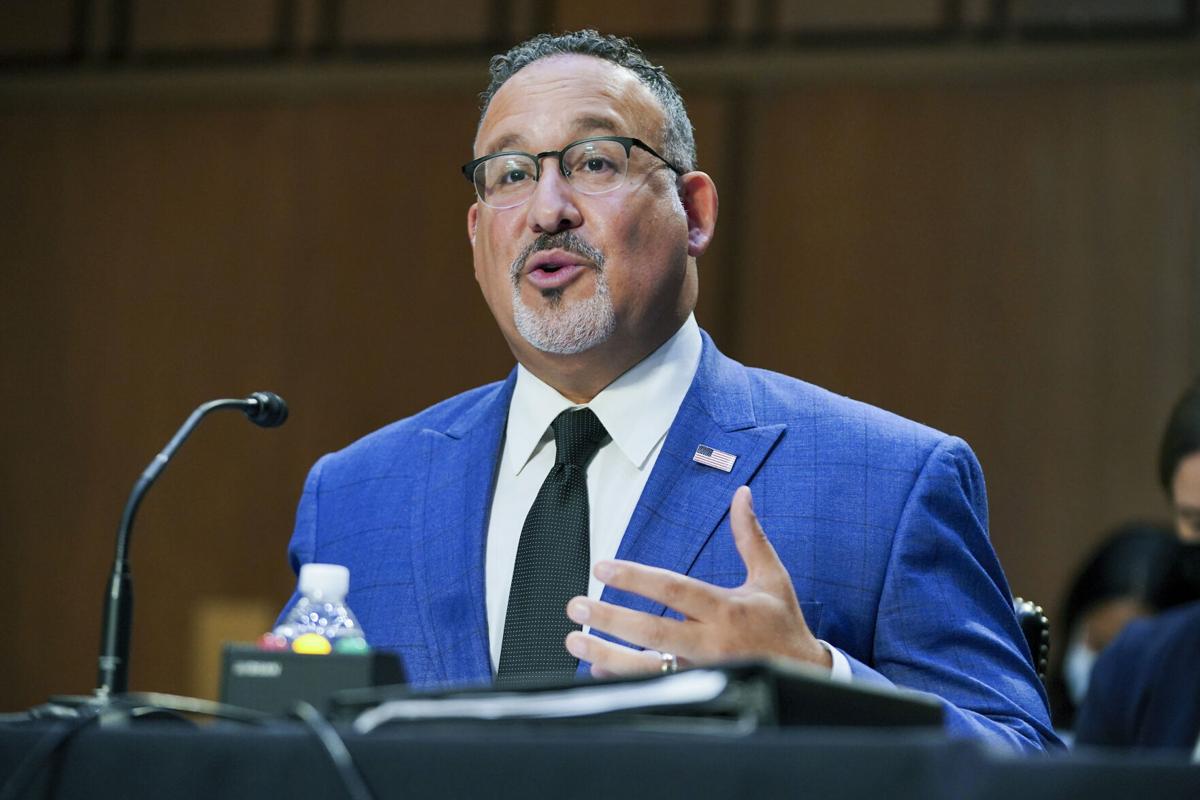What is the ‘student loan safety net’ US Feds have proposed, alongside forgiveness?

What does the “student loan safety net” the US Federal Reserve has suggested look like?
Despite the payment plan’s low profile, some education experts believe it currently to be a more effective tool for main lowering the cost of college, particularly for those with lower incomes.
The White House is also moving forward with a proposal that would offer a new way to repay federal loans under much more lenient terms mainly, and lowering student loan payments for millions of Americans both now and in the future. The repayment programme was unveiled in August by President Joe Biden, but it was overshadowed by his far-reaching plan to reduce or eliminate student debt for 40 million Americans.
Despite the payment plan’s low profile, some education experts believe it to be currenly a more effective tool for also lowering the cost of college, particularly for those with lower incomes. Officials from the Education Department described the new plan on Tuesday as a “student loan safety net” that will stop borrowers from accruing excessive debt.
Miguel Cardona, the secretary of education, stated that “student debt has turned into a dream killer.” This is a main promise to the American people that we will, at long last, fix a broken system and lower the cost of student loans. Democratic presidential candidate Joe Biden is continuing with the repayment plan despite the Supreme Court’s uncertainty regarding the outcome of his one-time debt cancellation. The White House has requested that the court reject two conservative opponents’ legal challenges and uphold the plan.
Oral arguments are scheduled for February 28. Last week, the Biden administration submitted its brief. Tuesday saw the formal publication of the new repayment plan by the Education Department in the Federal Register, kicking off a lengthy period for public comment.
The proposal would significantly overhaul income-driven repayment plans, one of several payment options provided by the federal government, if it were to become law. The resulting plan would promise that unpaid interest won’t be added to a borrower’s loan balance and would have lower monthly payments, an easier road to forgiveness, and these features.
Currently, the federal government offers four different income-driven plans, but the proposal would primarily phase out three of them and concentrate on one more straightforward option, reducing the confusing array of options borrowers currently have to choose from.
A borrower’s discretionary income cannot exceed 10% of their monthly payments under the current plans, and those making less than $20,400 annually are exempt from making payments. The new proposal would reduce borrowers’ debt in half by capping undergraduate loan payments at 5% of their income and only requiring payments from those who make more than about $30,000 annually.

Borrowers would not be charged for any accumulated interest as long as they make their regular payments. The modification is intended to stop borrowers from also having unpaid interest added to their loan balance, a practise that can still result in debt accumulation even when borrowers are making payments.
Importantly, the proposal would also make it simpler to have debt forgiven after making payments for several years. After 20 or 25 years of payments, current plans guarantee that any outstanding debt will be cancelled. For those who took out loans totaling $12,000 or less, the new plan would eliminate all outstanding debt after ten years. Additional borrowing would add a year for every $1,000.
According to the Biden administration, typical four-year university graduates would save about $2,000 annually compared to current plans, and 85% of community college borrowers would be debt-free within 10 years. The proposal is viewed as a significant step toward making college more affordable by supporters. Some claim that it is so generous that it comes close to free community college, a promise Biden made during his campaign but was unable to fulfil.
Right-wing opponents deride the revised plan as an unfair handout with a high cost. According to estimates from the Biden administration and some critics, the repayment plan will cost roughly $138 billion over the next ten years. Even some on the main left have questioned the wisdom of the proposal, claiming that it is so generous that it effectively converts student loans into grants that don’t have to be repaid.
They caution that this might encourage more students to take out loans and encourage colleges to raise tuition costs if they know students won’t be responsible for repayment. Others have called income-driven payment plans a failed policy and urged the administration to do away with them entirely. Critics point to a federal report from the previous year that found thousands of borrowers were stuck with debt that also should have been forgiven due to careless oversight of the programme.
Cardona stated that his organisation is working on additional proposals that would make colleges answerable if their students accrue excessive debt. Biden has called for educating the public about programmes that burden graduates with debt. On Tuesday, the Education Department started the procedure to achieve that goal by consulting the public on the best way to recognise “low-value” programmes.
Income-driven repayment plans, one of several payment options provided by the federal government, would undergo a significant overhaul if it were to become law.
The resulting plan would guarantee that unpaid interest won’t be added to a borrower’s loan balance and would have lower monthly payments, a simpler route to forgiveness.

The SUNY Empire Foundation board member Marian Conway, 67, of Lindenhurst, said, “The burden is the interest.” She graduated from SUNY Empire State College and is in debt.
According to Conway, “the interest can double or triple the amount the borrowers have to repay, burying them in debt.” According to its website, SUNY Empire State College, which has locations throughout the state, including Selden, focuses “on educating students at any stage of life or learning.”
The majority of students there, according to Conway “are nontraditional students, like I was, who also work and frequently have families to support. Life’s other expenses are piled on top of student loans until they become unbearable.”
Currently, the federal government offers four different types of income-driven plans, but the proposed changes would primarily phase out three of them in favour of a single, more straightforward choice.
A borrower’s discretionary income cannot exceed 10% of their monthly payments under the current plans, and those making less than $20,400 annually are exempt from making payments.
The new proposal would reduce borrowers’ debt in half by capping payments for undergraduate loans at 5% of discretionary income and only requiring payments from those who make more than about $30,000 annually.
Borrowers would not be charged for any accumulated interest as long as they make their regular payments. The proposal would also make it simpler to have debt forgiven after making payments for a while.
After 20 or 25 years of payments, current plans guarantee that any outstanding debt will be cancelled. For those who took out loans totaling $12,000 or less, the new plan would eliminate all outstanding debt after ten years. Additional borrowing would add a year for every $1,000.
According to the Biden administration, typical four-year university graduates would save about $2,000 annually compared to current plans, and 85% of community college borrowers would be debt-free within 10 years.
On Long Island, the presidents of the two county community colleges emphasised the significance of accessible community colleges as economic engines that enable students to access higher education and prepare for careers.
“President of Suffolk County Community College Edward Bonahue said, “Any actions that increase affordability and lessen the financial burden on students and their families are welcome.
In light of the region’s urgent need for skilled workers in a variety of fields, Maria Conzatti, acting president of Nassau Community College, stated that “Any initiative that helps to relieve the debt burden on students and to make a college education more affordable and accessible would be tremendously beneficial for our community.”
The proposal received high marks from the Institute for College Access and Success, a nonprofit that supports the affordability of higher education. According to Sameer Gadkaree, the organization’s president, “the changes proposed today would also provide meaningful financial relief to millions of borrowers and also help shield students from debt that has not [been] paid off, including those who also start college but do not complete a degree.”

Many graduates from Farmingdale State College will benefit from the changes, according to spokesman Matthew Colson. While more than 55% of graduates have “little to no debt, but there are still many people who do. Our recent graduates who are gainfully employed, albeit for some at modest salaries as early career professionals, benefit greatly from the income-driven approach.”
Right-wing opponents deride the revised plan as an unfair handout with a high cost. According to estimates from the Democratic Biden administration, the cost would be close to $138 billion over ten years, though some critics have put the figure closer to $200 billion.
The proposal, according to Republican Rep. Virginia Foxx of the House Committee on Education and the Workforce, transforms the federal loan programme into “a grant that is made without regard for the taxpayers who pay for it.
Even some on the left have questioned the wisdom of the proposal, claiming that it is so generous that it effectively converts student loans into grants that don’t have to be repaid. They caution that this might encourage more students to take out loans and encourage colleges to raise tuition costs if they know students won’t be responsible for repayment.
Others have called income-driven payment plans a failed policy and urged the administration to do away with them entirely.
edited and proofread by nikita sharma




